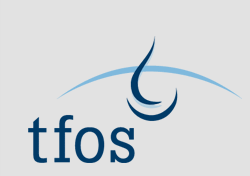








 |
TRIAL DESIGN AND OUTCOMES
Design of clinical trials to determine the possible causes of CLD, for the most part, have not been optimal and numbers of participants in the trials generally small. Surprisingly, given the strong association of CLD with discontinuation of contact lens wear, the design of clinical trials has tended to focus on performance of certain contact lenses or lens care solutions, rather than the specific nature and etiology of contact lens discomfort. This may be due to the majority being industry- sponsored clinical trials.
Most clinical trials have evaluated the role of lens type (material differences), use of care systems, and effect of lens fitting, but they have been limited in their ability to isolate one factor from others. A significant limitation has been the lack of a consensus-based definition of CLD to date. Other limitations include lack of control of confounding variables or use of proper controls. An example of this is the problem often found when reports have been published on the results of changing wearers from their habitual lens of choice to a new (sometimes experimental) lens. Without appropriate masking and controls (for example, not only changing to the new lens type, but refitting a portion of subjects with or crossing over the subjects into their habitual lenses once masked), results tend to suffer from inherent bias.
This subcommittee report details many types of bias that should be considered in future work in this area. Further, prospective trial designs with randomization of subjects and double masking is optimal. Consideration of run-in and wash- out periods are important to avoid memory bias or changes that may occur to physiology during wear of lenses. Appropriate entry criteria and adequate sample size determi- nations a priori are critical.
Finally, it was determined that certain factors from clinical trials, at least potentially, had been associated with CLD. These included lid wiper epitheliopathy, tear film stability/volume, and lid parallel conjunctival folds. It was recommended that further appropriately designed clinical trials be performed to assess these factors (and others). Although no single outcome parameter of contact lenses was found to be validated fully, it was concluded that the Contact Lens Dry Eye Questionnaire currently was the most appropriate subjective outcome for CLD. An even more reliable and sensitive outcome parameter is needed for future work in this area.
|














